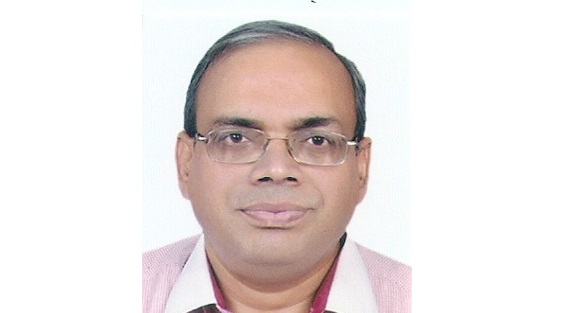Our aspiration is not only to be an EV using nation but also to be a global EV manufacturing hub

Shri. Sudhendu Jyoti Sinha, Adviser (Infrastructure Connectivity & E-Mobility), NITI Aayog shares his views about the initiatives which Niti Aayog and state governments have taken for the growth of electric mobility in India.
Q: What has been the role of Niti Aayog in growth of EV usage in India?
Electric mobility is one of the greatest disruptions of our time. Globally, it has been adopted; countries after countries in Europe, America, and different geographies have adopted electric mobility. For NITI, the National Institution for Transforming India, this is a base for the national mission on transformative mobility and battery storage. This mission is driving this electric mobility forward. This mission was created in March 2019 as a follow-up to the global MOVE Summit 2018, in which Honourable Prime Minister Shri Narendra Modi ji was the driving force. In the MOVE Summit, they deliberated how the mobility of the future is going to be and agreed on electric mobility. As a follow-up to that, a national mission was set up with the task to take this electric mobility forward.
Q: How has been the state government’s response to the charging infrastructure handbook, which has been done by Niti Aayog?
Charging infrastructure handbook was basically a kind of guideline that, if you are going to install the charging infrastructure, then what should be the safety precautions that you should be taking?
There are a set of documents. There are revised guidelines on charging infrastructure that have been published by the Ministry of Power. In addition to that, there are a number of studies that have come out in which premier institutions have been involved. For example, there is one on the principles of setting up charging infrastructure, which has been done in collaboration with the Administrative Staff College of India at Hyderabad. Many documents are there.
Q: How has been state government response to the Niti Aayog electric mobility push?
The response of the state governments has been phenomenal.
The strategy has been that the central government would be giving only broad guidelines. They would not be getting into each and every aspect of policy. But the state government should be on the driving seat. They should be the ones who should be adopting electric mobility. They should be the ones who should be able to see the advantages of this new mobility.
Initially, somewhere in 2015, we were just nudging, encouraging, and persuading the states to come up with a state policy. Because once there is a state policy, there is a commitment, there is a focus of the state to take it forward, and then gradually it will improve. After 29 months of hard work, in September 2017, Karnataka became the first state to come with an electric mobility policy. In the next 29 months, nine states joined, followed by 19 more states in the next 23 months. Today, 33 out of 36 states and union territories have their EV policies.
States are able to see the advantages of it, not only from the mobility perspective, but if they create a mobility corridor in their state, it will attract investment. It will give business options to the people.
Q: Niti Aayog has also been advocating battery swapping. How has been the response in your draft battery swapping policy?
It was a budget mandate that in urban areas, because of space constraints, you can’t afford to allow a vehicle to park for 2 to 5 hours just to get the vehicle charged. So, battery swapping was advocated.
We laid out standards for the battery swapping policy. At the same time, we were open for new and innovative business solutions. When we shared our findings with the stakeholders, they received a favorable response. We had consent from most of the states. But yes, there are some issues which we are trying to sort out with respect to standards and interoperability.
Battery swapping is of now is going on. Even today, you can purchase a vehicle without a battery. Because the objective is that battery should be a service.
If battery comes as a service, where it constitutes about 30 to 45 percent of the vehicle cost in the low and medium segments. With battery as a service, the challenges of affordability will be taken care of, and the electric vehicle segment will grow on a fast track. But yes, to achieve ‘battery as a service’, it is necessary that battery must have standards.
Q: Any policy to incentivise research in battery technology?
I would put it this way: giving cash incentives or something like that will be difficult for me as of now to identify. Not that it is not there.
We have realized that electric mobility is based on cutting-edge technology. If you stick to your technological obsolescence, you lag behind others. So if the national aspiration is not only to be an EV-using nation but also to be a global EV manufacturing hub, if that is the national aspiration, then the technology must be the first vehicle to take that drive. It has to be pulling this particular aspiration to its milestone, to its end point. So what we did at NITI Aayog was that we encouraged industries and IITs. Today, 16 out of 23 IITs are having Centers of excellence. In these IITs, new programs have been introduced on mobility, sustainable engineering, battery systems, and storage systems, with inter-departmental participation. So mechanical, electrical, electronics—all departments have come up with these new programs, connecting them to the CTOs of OEMs.
We have asked these OEMs to come out with specific problem statements for the academic researchers. Academia has been given access to OEM assembly lines, etc., and within a limited time frame, they have to come up with specific solutions.
Q: Which state, according to you, has the best practice to promote the adoption of electric vehicles?
Identifying any one state would be difficult. But maybe Karnataka, because of their first-mover advantage. Similarly, I would say Telangana, Goa, Gujarat, Maharashtra, and Delhi. These are a cluster of states who have done good. They have also done exceptionally well as far as state EV policy is concerned. Not only they framed the policy, they also revisited them, revamped them, and made them all the more alive to the expectations of the people.
Q: Can supply of lithium upset India’s EV dream?
Let’s put it this way: lithium is definitely an important component in EVs. And we do not have lithium as of now. We do have some information about its availability in Karnataka and Jammu. But, as of now, we have to source it from outside.
To say that this can upset the electric mobility mission would be wrong.
To stabilize the supply chain, specific initiatives are being taken, and to move the chemistry away from lithium is also being taken care of.
Q: What, according to you, can help India leapfrog into the forefront of the EV technology space?
It is technology; where I already mentioned, much of action is being taken.
On the technology front, the quality parameters have to be worked on and tested. Secondly, we must have control the supply chain. So that the majority portion of supply chain is within our control. In case of adverse situation, someone else should not be in a position to destabilize it. Third, the product pricing has to be globally competitive. If we are able to crack these three things—control over the supply chain, quality, and globally competitive pricing—we will in forefront.
As of now, our products, electric vehicles, and their components are finding internationally acceptance. Recently, in Spain, one of the premium OEM has opened up new bus manufacturing facility. Similarly, Indian cargo vehicles are being sold in New Zealand. Some of our electric vehicles are already there in our neighborhood, who are looking towards India for supply of electric vehicles.
Q: By 2030, what percentage of vehicle manufacture will be electric in India?
It would difficult to give the exact percentage terms. Though we always talk of 30% by 30, that statement is there. But let me put it this way: Let me borrow the content from the India Economic Survey, which says that by 2030, the year on year, the CAGR will be 49%. By 2030, our capacity will be to manufacture 10 million units per year. It will also create a lot of new job opportunities. The figure that has been quoted is five million, which is another big number.
The new initiatives that are being taken, the confidence we have, and the way government, industry, academia, and R&D institutions, all are working together like a team in India are taking the electric mobility mission forward.




